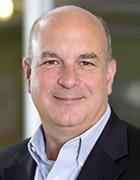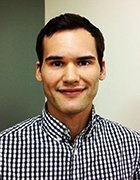
NMedia -Fotolia
多用途数据主导着“物联网的未来”实现
物联网议程与“物联网未来”的合着者Don Deloach坐下来,讨论了从IOT支持IOT产品向IOT支持IOT的组织的转变 - 以及如何到达那里。
The internet of things wave is here, and its promise of flashy new gadgets is quickly being overshadowed by its promising effects on both the enterprise and industry verticals. However, at the end of the day, Don DeLoach, former president and CEO of Infobright (it was acquired by Ignite Technologies in March 2017), knows IoT implementation is all about the data and how that data is being used.
In his recently published book,The Future of IoTDeloach由Gartner分析师Emil Berthelsen和Pentaho Enterprise Solutions Wael Elrifai合着,Deloach探索了我们要去的物联网状况,以及为什么更整体的方法将帮助我们到达那里。在这里偷看。
这本书叫The Future of IoT. Whatisthe future of IoT?
Don Deloach:物联网的未来植根于所有类型的企业中物联网的广泛接受和实施。但是发生这种情况,重点将越来越多地转移到企业中,在这里利用基础的物联网数据将创造最大的价值,因此,围绕物联网数据的数据至关重要问题将是将来部署架构的关键考虑因素。因此,简而言之,物联网的未来是利用企业级别的物联网数据的效用值。
What's the main point about the future that readers should take away?
 Don DeLoach
Don DeLoachDeloach:标志着物联网出现的筒仓系统smart lighting或智能的冰箱或工业设备,将为参与系统提供更全面的处理。读者应该拿走部署体系结构需要适应这种整体方法。
我们离这种整体待遇有多远,我们如何到达那里?
Deloach:我认为我们开始朝这个方向看到运动,但是进步可能会很慢。有一个平台数capable of supporting this type of approach (Amazon IoT,Hitachi Lumada,Verizon和BlackBerry仅举几例),但是尽管有基本技术或多或少地适应方向,但进度将与企业的出现同样需要,要求对数据和产品提供商进行更多控制,同时他们认识到他们在他们的同时认识到他们不想“失去控制”封闭的循环筒仓,向他们的企业买家提供更好地控制数据的能力将越来越成为他们的竞争优势。
我还认为我们将开始听到有关企业和组织这些职位的更多信息。因此,简而言之,我认为我们还没有在那里,进展将需要一段时间,但是我们将开始在不久的将来开始缓慢地发生这种情况。
In the beginning, you reference an article by PTC's Jim Heppelmann and Harvard professor Dr. Michael Porter on the 'five stages of IoT.' It was written a couple of years ago; where do you think we are in terms of these stages, and are we where we should be in terms of IoT implementation?
DeLoach: We are somewhat in between stage three and stage four from a practical standpoint. Stage three is the smart connected products stage. This is marked by the association of IoT with "IoT-enabled products" and the lens is through the product supplier. The fourth phase is product systems, which have products talking to other products, like what we areseeing in smart homes以及旨在与其他产品合作的某些产品集。这里的主要考虑是市场发展的时间。虽然显然有进入产品系统阶段的示例,并且我们开始看到一些“系统系统”示例,但大多数资金仍然与更基本的物联网实施消费产品有关。随着人们和组织获得更多的经验,他们还将更加仔细地考虑他们想从这些产品中使用的数据,更具体地说,他们希望如何使用该数据,尤其是在其他物联网产品的数据背景下。“我们应该在哪里”正在考虑市场的发展方向,并开始计划我们的技术路线图,training and hiring plans, and contractual frameworks around gaining the maximum leverage of the data. As an aside, this can be done while still providing the product makers all the data they are recovering now, but it doesn't need to be at the expense of the product user (ostensibly the enterprise).
 The Future of IoT
The Future of IoT
The Future of IoTfocuses a great deal on IoT data and the importance of using it properly. What is holding organizations back from reaping the full benefits of IoT data, and how do you think they will get where they need to be in the future?
DELOACH:物联网的进步和对IOT支持产品的关注是可以理解的。但是只要组织没有full access to and control of the data, they will be unable to gain the maximum leverage of that data. I would argue that if the organization using the IoT-enabled products is contractually bound to have the product provider both dictate the specific data and the flow of that data, then the limitations on the enterprise are significant. So the key is the architecture. We highlight a concept called the 'first receiver' in the book. There is nothing overly complex about this. In fact, the notion of leveraging the utility value of the data is the basis for relational databases that have been around for decades. The main premise is separating the creation of data from the consumption of data. This is commonly associated with an event-driven, publish-and-subscribe architecture. That same temperature you are getting from the turbine might be helpful to the turbine maker, the turbine user, the turbine users' supply chain partners and even regulatory agencies like OSHA. It's still the same piece of data. The key is to get the right data into the right hands in the right way. That's where the leverage is realized.
Taking that a step further, where do we stand today in terms of ownership of data? What should organizations look for in regard to data ownership?
DeLoach:这确实混合在一起,显然有多种选择。我也相信选项正在改变。在这个方程式中,所有权和管理之间的澄清也很重要。一方从技术上讲可以拥有数据,而其他方可以控制。想想自己设置某些应用程序的使用权限。您可以在不一定拥有的情况下(在某种程度上)控制数据。我认为获取和使用支持IOT产品的企业应拥有和控制数据,但是在某些情况下,可以将某些控制权传递给其他成分,以至于有意义。我还要说,应合同建立IOT产品的提供商与这些产品的用户之间的关系,以便产品提供商可以继续从产品中获取数据以服务这些产品,并继续使它们变得更好。
Is IoT, as a concept, too big to be useful?Should we narrow what we mean when we say IoT?
Deloach:从概念上讲,签名越广泛(至少在许多情况下)。考虑人口健康。Understanding medical informationis critical, but marrying that information to environmental information, demographic information and even things like weather or crime could conceivably contribute to creating a pattern that reveals insight. The ultimate goal is to take more informed actions that lead to better outcomes, regardless of the vertical orientation.
我们应该认识到,物联网对我们将如何作为家庭,组织和社会发展具有很大的影响。我认为将IoT列为特定产品视图的观点是一个错误,尤其是在如何处理和利用数据方面。同样,世界的外观五到十年的方式肯定会超出许多人现在可能考虑的事情。我认为,当我们说IoT时,我们应该首先从多个物联网系统的用户的有利位置查看它,以及这些系统如何交互以及如何使用基础数据来创建最大值。
我们是否应该停止谈论物联网实施,而是谈论物联网物流,物联网汽车,物联网自动化和物联网医疗保健,所有这些都被认为包括很多连接性?
DeLoach: We probably should in many respects. The truly 'broad view' of IoT will reach beyond this, even when an organization is reaching beyond its normal scope for information that might seem completely unrelated, like a fast-food franchise owner trying to understand micro weather patterns or environmental data or concert schedules; that seemingly unrelated data would be used to enrich the baseline data of the operation. The franchise owner wants to sell more at a higher price while spending less. Understanding how the traffic flows relative to certain events, or what the point-of-sale data suggests when the weather patterns follow a certain trend, or some combination thereof, all enriches the signature用于采取预测行动to achieve a better outcome. In this regard, domain expertise and context make all the difference. So I believe the 'narrowing' has more to do with the data model and associated consuming applications. But that also accommodates the enriched signatures and provides the basis for gaining better and better insight for that particular enterprise.
Get your copy ofThe Future of IoT来自出版商BookBabyorAmazon.
About the authors:
Don Deloach是一位企业家,作家和董事会成员,也是物联网的领先行业传道人。唐是中西部物联网委员会的联席主席,已经担任伊利诺伊州技术协会的董事会已有10多年的历史了。Don曾担任YouCentric的总裁兼首席执行官(由JD Edwards收购),Aleri(由Sybase收购)和Infobright(由Ignite Technologies收购)。他还曾担任Broadbeam的外部主任,并担任Apropos董事会主席。唐(Don)是关于技术,尤其是物联网的经常作家和发言人,并且是几个出版物的贡献编辑。他是佐治亚理工学院的工业工程毕业生,佐治亚理工学院是一位热情的骑自行车的人,并与妻子和七个孩子中最小的孩子一起住在芝加哥地区。
 Emil Berthelsen
Emil BerthelsenEmil Berthelsen是Gartner和Advisory IoT Group的研究总监。在担任战略和管理顾问和研究分析师的职业生涯中,埃米尔(Emil学习和强化学习技术。Emil之前曾在Machina Research,Analysys Mason,KPMG Consulting,BT Consulting和Alexander Proudfoot Plc。工作,在新兴技术以及业务模型和流程中建立了超过二十年的经验。埃米尔(Emil)在欧洲,亚洲,非洲和美国的M2M,物联网和分析会议上主持,介绍和LED小组讨论,并定期为这些主题的文章贡献有关行业期刊,在线新闻门户网站和博客服务的文章。埃米尔(Emil)拥有剑桥大学国际关系的MPHIL。
 Wael Elrifai
Wael ElrifaiWael Elrifaiis an avid technologist and management strategist, bridging the divide between IT and business as Pentaho's EMEA director of enterprise solutions. He's been working in high-performance computing, machine learning, the broader artificial intelligence field and the big data ecosystem for the past decade. Wael has served corporate and government clients in North America, Europe, the Middle East and East Asia across a number of industry verticals and has presented at conferences worldwide. With graduate degrees in both electrical engineering and economics he's a member of the Association for Computing Machinery, the Special Interest Group for Artificial Intelligence, the Royal Economic Society and Chatham House.









